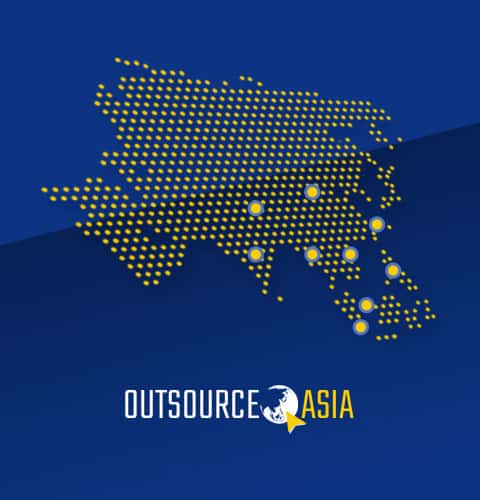
Reshaping The Future Of Outsourcing
The business process outsourcing (BPO) sector and global managed services market continue to keep its head above water as organizations big and small navigate through a post-pandemic world. Forward-thinking business leaders are forced to address three urgent concerns: how the work is done, who does the work, and where and when work is done. To keep business afloat and stay relevant in the new normal, this means leveraging outsourcing benefits among other things.
The global business process outsourcing market size, according to Grand View Research, reached more than $230 billion in 2020 due to increased focus of companies to emphasize on core competencies, to improve business agility, and to tap into foreign markets.
The CMO Survey 2020 revealed that the coronavirus health crisis led to an increase in outsourced marketing activities. At least 85% of customers are open to digital offerings and put a premium on positive digital experiences.
If we look at the figures provided by Enterprise Technology Research (ETR), the percentage of remote workers have already doubled in 2021 as many companies rely on outsourced service providers to do many of their tasks.
That leads us to the question: In a changing world of work, what are the key implications of all these evolving trends for businesses’ outsourcing strategies? There are key takeaways reshaping the future of outsourcing that organizations must watch out for.
Strengthening Strategic and Operational Resilience
The 2021 Deloitte Global Resilience Report revealed that 70% of CXOs (chief experience officer) do not feel completely ready to tackle more business disruptions and that they still anticipate more unsettling events that are of similar or greater magnitude to the COVID-19 pandemic.
“The past year has been a wake-up call,” says Michele Parmelee, Deloitte Global deputy CEO and chief people and purpose officer. “Now that we’ve seen what can happen and how quickly it can unfold, there’s a better understanding of how something like a virus or a major climate event can dramatically affect economies. These issues and their potential impact aren’t theoretical anymore.”
Therefore, it is a matter of urgency for global organizations to strengthen their strategic and operational resilience. “Leaders have to ask themselves if they’re investing in the short term or long term, if they’re training people for today’s work or tomorrow’s work, if their structures promote or inhibit cooperation and if they’re committed to serving all stakeholders or just shareholders,” Parmelee adds.
Companies must ensure that thriving in business, investing in top talents, and bouncing back from adversity are priorities when refining outsourcing strategies. Collaborating with third-party vendors or off-site contractors with the right skillset and identical vision means:
- Access to new digital products, services, and experiences in response to changes and demands in customer behaviors, expectations, and needs
- Create new partnerships, both within and outside of the industry, that can open doors to foreign or untapped markets
- Leverage tried-and-tested supply chain risk management strategies for protection against disruptions, delays, or closures
- Fully utilize new technologies – from artificial intelligence and machine learning to cybersecurity, blockchain, and edge computing – to accelerate growth and success across today’s transforming digital landscape
Get the right advice on investment portfolio including capital spending, resource allocation, performance-oriented upgrades, or cost-structure improvements
Future-Proofing Your Contract Management Process For Crises
Contract lifecycle management (CLM) is the automation, management, and streamlining of an organization’s contracts from initiation through execution, performance, and renewal/expiry. Effective and proactive contract lifecycle management ensures compliance with regulations and requirements, prevents potential data breaches, and guarantees accuracy and transparency from beginning to end.
As we continue navigating the uncharted waters of the coronavirus pandemic, organizations of all sizes and from different industries are evaluating existing contracts with clients and partners – if they can invoke a force majeure to excuse execution of obligations or in what way are they still expected to perform specific duties.
Regardless of explanations, the truth remains: preparation is key, and it is never too late to future-proof your contract management process for various business environments, including a global health crisis.
The contract management process can be future proofed through three levels:
Primary Level. Focus on tackling the immediate problem of product flow or service implementation. With supply chains affected, it became increasingly difficult for companies to procure goods and/or generate services that would satisfy provisions within the contract. It is advisable for the companies to negotiate the contract terms which will allow for the easy execution of the amendments and alterations in the contract.
Secondary Level. Formulate an updated and realistic plan to maintain business continuity. Communicate new terms and conditions with suppliers and clients before regular business resumes to avoid friction. This will also ensure that clauses on the period of waivers are clearly understood and followed and that provisions for a seamless transition in the future will be made.
Tertiary Level. Formulate a long term and dependable CLM plan to build back the lost time, manpower, and financial resources due to the COVID-19 spread. This requires involvement of all investment partners and key stakeholders so they can be briefed about the risks related to potential business crises.
Bridging Talent Gaps
The coronavirus pandemic led to the Great Resignation – and companies are struggling to address the problem. Why? They don’t really understand why workers are quitting their jobs despite a very uncertain future. And so, employers turn to well-intentioned quick fixes which do not really meet the real needs in the first place. Also called the Great Attrition, this is radically altering the workforce dynamic and business leaders who misread the danger signs do so at their own peril.
“By not understanding what their employees are running from, and what they might gravitate to, company leaders are putting their very businesses at risk,” the McKinsey report said. “Moreover, because many employers are handling the situation similarly — failing to invest in a more fulfilling employee experience and failing to meet new demands for autonomy and flexibility at work — some employees are deliberately choosing to withdraw entirely from traditional forms of full-time employment.”
Executives who think that this pandemic-induced phenomenon is easing – or is limited to particular industries – are misguided. The McKinsey survey revealed the following numbers:
- 40% of employees are at least somewhat likely to quit in the next several months
- almost 65% of employers believe there would be an increase in voluntary turnover for the following six months
- at least 35% of workers who resigned did so without having a guaranteed job offer
- a primary reason for 65% of employees who chose to stay is that they liked where they lived
more than 90% of workers who transferred to other companies don’t have to relocate, meaning, they are allowed remote work options
If companies make a concerted effort to take meaningful action to bridge talent gaps, they could gain an edge in the race to create and sustain a thriving post-pandemic organization. How?
Business leaders should be proactive in inspiring their teams, motivating towards productivity, and leading with compassion. There must be a clear plan for a dynamic and positive company culture where transparency is encouraged, support network is richly provided, and diversity is celebrated.
“We know that a happy and healthy workforce is a productive and profitable workforce,” points out Susie Crowder, human capital advisory director for Grant Thornton Channel Islands. “Empathetic leaders will be aware of how their people are feeling as a result of the unprecedented changes that businesses and their people have gone through, and actively supporting them.”
Training and capability building will be crucial for managers and executives who didn’t come from hybrid or virtual environments. Guiding team leaders and department heads to find the best-fit strategies will drive conversation about which skills will be required for critical projects and workflows — and what talent portfolio is therefore preferable.
“When an organization identifies the tasks that make up a job, it can better explore how else it might acquire the skills to do those tasks, such as reassigning them to other employees, using temporary assignments or rotations, hiring freelancers or even automating the tasks,” says Ryan Hill, Director, Advisory, Gartner. “Breaking down roles into tasks enables business leaders to identify an optimal mix of talent strategies for its business objectives.”
Compensation benefits must be aligned with employee priorities. Free parking or entertainment-related perks might not look too appealing for employees right now. For family-minded workers, offer subsidies related to family care and childcare or staycation packages. For career-focused workers, provide training and development, reskilling/upskilling/cross-skilling programs, or network expansion opportunities.
“Organizations that are successful in bridging the talent gap will be able to harness new and emerging technologies to reach higher levels of efficiency of production and consumption, expand into new markets, and compete on new products for a global consumer base composed increasingly of digital natives,” according to the World Economic Forum.
Harness the Power of Outsourcing
Outsourcing is expanding across industries around the globe in the new normal, striving for new heights of efficiency, innovation, and accountability. Outsource Asia is committed to helping you create and sustain strong and productive partnerships with outsourcing service providers. Let’s chat today.


